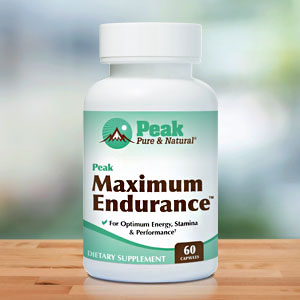Get Easy Health Digest™ in your inbox and don’t miss a thing when you subscribe today. Plus, get the free bonus report, Mother Nature’s Tips, Tricks and Remedies for Cholesterol, Blood Pressure & Blood Sugar as my way of saying welcome to the community!
Exercising for lower blood pressure: How much is enough

We’ve all heard that if you want better blood pressure you have to exercise.
In fact, studies have shown that regular exercise is just as effective as most blood pressure drugs.
However, it turns out there could be a catch.
That’s because according to a team of scientists at the University of California, you need more exercise and at a younger age than has been previously recommended…
There’s no skimping when it comes to exercise and blood pressure
Let’s face it, exercise comes easily in our teen years but slacks off as we get older. Unfortunately, by the time we’re in our 30s and 40s a sedentary lifestyle becomes the norm.
But according to researchers, that’s exactly when we need to ramp it up.
They say that “maintaining physical activity during young adulthood — at higher levels than previously recommended — may be particularly important for preventing hypertension.”
And they have decades of research to back up this conclusion…
The team followed over 5,100 adults, tracking their health over 30 years with physical assessments and questionnaires about their exercise habits, smoking status and alcohol intake.
At every visit, the researchers monitored blood pressure using three separate readings.
Overall, they discovered that for everyone — no matter their sex or race — levels of physical activity fell between the ages of 18 and 40 years old. Not surprisingly, as physical activity slumped, the rates of hypertension rose dramatically.
“Nearly half of our participants in young adulthood had suboptimal levels of physical activity, which was significantly associated with the onset of hypertension, indicating that we need to raise the minimum standard for physical activity,” said lead author Jason Nagata, a UCSF expert in young adult medicine.
Because of this, the team says that we should look at the time of young adulthood to middle age as the perfect window for keeping activity up to ward off blood pressure problems.
If you haven’t guessed, more is better
And that’s not all…
The researchers found that some people did break the mold and not only continued to exercise after their teens. And they were the real winners…
The team discovered that people who had regularly participated in five hours of moderate exercise a week during early adulthood — double the minimum amount currently recommended — significantly lowered their risk of high blood pressure.
This was especially true for those who maintained their exercise habits until age 60.
This led the researchers to conclude that, “Achieving at least twice the current minimum adult [physical activity] guidelines may be more beneficial for the prevention of hypertension than simply meeting the minimum guidelines.”
Exercise and health hacks for healthy blood pressure
Hypertension harms arteries and blood vessels, and kick-starts heart disease. And recent research shows the earlier heart disease starts, the higher your risk for dementia.
That’s a disease trajectory to certainly steer clear of by maintaining a high level of physical activity throughout life. Of course, that’s easier said than done…
If you’re struggling to get back into an exercise routine, start slow and easy with something like walking. If you have any existing health problems, talk it over with your doctor, then get started. Stretch before walking for an extra blood pressure-lowering boost.
When you think of it, adding 5 hours of physical activity isn’t too daunting, especially if you spread it over 6 or 7 days. But if you appreciate a good health hack or two or more, like me, consider these:
- The Indian secret that doubles the heart-healthy benefits of exercise without working harder.
- Vitamin K2 – Supports arteries that are elastic and pliable for healthy blood flow.
- Grape Seed Extract – The polyphenols in grape seed extract activate nitric oxide in the lining of blood vessels to relax arteries promoting healthy blood flow.
- Pterostilbene – This antioxidant helps block the creation of Angiotensin II – an enzyme that stiffens the walls of your blood vessels and triggers a hormone that increases the amounts of sodium and water retained by your body.
- Green tea – Researchers from the School of Medicine at Guilan University of Medical Sciences found regular green tea intake was found to lower systolic blood pressure by an average of 4.81 mmHg, and diastolic by 1.98 mmHg.
Editor’s note: Have you heard of EDTA chelation therapy? It was developed originally to remove lead and other contaminants, including heavy metals, from the body. Its uses now run the gamut from varicose veins to circulation. Click here to discover Chelation: Natural Miracle for Protecting Your Heart and Enhancing Your Health!
Sources:
Physical Activity and Hypertension from Young Adulthood to Middle Age — American Journal of Preventive Medicine














